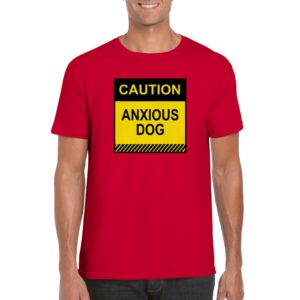Your cart is currently empty!
Can Your Dog’s Tail Wag Reveal Their Emotions? Discover the Science Behind Tail-Wagging.

The Science of Tail Wagging: Emotional Responses and Brain Lateralization in Dogs
Understanding animal behavior gives deep insights into their emotions and brain processes. Two important studies show how dogs’ tail-wagging reflects their emotions and influences other dogs.
Asymmetric Tail-Wagging Responses to Different Emotive Stimuli (2007)
In 2007, Quaranta, Siniscalchi, and Vallortigara examined dogs’ tail-wagging responses to various visual stimuli. They tested thirty mixed-breed dogs in a controlled environment. The stimuli included seeing their owner, an unknown person, a dominant unfamiliar dog, or a cat.
The findings revealed a significant asymmetry in tail-wagging, linked to the type of stimulus. Notably, dogs wagged their tails to the right when seeing their owners, indicating left-brain activation. This is associated with positive emotions and approach behaviors.
In contrast, when shown a dominant unfamiliar dog, the tail wagged to the left. This suggests right-brain activation, is linked to withdrawal behaviors and negative emotions.
Therefore, this pattern supports the idea that the dog’s left brain processes positive emotions, while the right brain handles negative ones. This specialization mirrors human neuropsychology and suggests a deep-rooted evolutionary trait in mammals.
Seeing Left- or Right-Asymmetric Tail Wagging Produces Different Emotional Responses in Dogs (2013)
Building on earlier research, Siniscalchi et al. (2013) explored whether dogs detect and react to asymmetric tail-wagging in other dogs. They showed dogs videos of conspecifics with either left- or right-asymmetric tail wags. The researchers measured the dogs’ heart rates and observed their behavioral responses.

Consequently, the results were striking. Dogs showed higher heart rates and more anxious behaviors when observing left-asymmetric tail wagging. This heightened stress response suggests that dogs see left-sided tail wagging as a sign of negative emotion or potential threat. Conversely, right-asymmetric tail wagging was associated with more relaxed and neutral emotional states in the observing dogs, reflecting a positive social signal.
Thus, these findings indicate that dogs not only exhibit asymmetric tail wagging in response to emotional stimuli but also interpret these asymmetries in others. This influences their own emotional and behavioral responses. This ability to read and respond to emotional states through tail-wagging direction shows sophisticated social communication in dogs.
Implications for Canine Welfare and Behavioral Understanding
These studies have profound implications for canine welfare and training. By understanding that dogs use tail-wagging direction as a signal, owners, veterinarians, and trainers can better interpret dogs’ emotional states. Recognizing a left-biased tail wag might indicate stress or anxiety, prompting timely interventions.
Moreover, these studies highlight similarities in emotional processing and hemispheric specialization across species. Consequently, this knowledge enhances our understanding of emotional and social behaviors, providing a richer context for studying animal and human psychology.
In summary, the research by Quaranta et al. (2007) and Siniscalchi et al. (2013) reveals that tail-wagging asymmetry in dogs is a sophisticated form of emotional expression and communication. Therefore, these findings enrich our understanding of canine behavior and emphasize the importance of considering emotional and neurological factors in animal welfare practices.
By learning to interpret the subtle cues of stress, frustration, or anxiety, you can take proactive steps to manage and treat your dog’s aggression effectively. Discover more about behavior modification or explore our comprehensive e-book on treating dog aggression at K9aggression.com.
References
A. Quaranta, M. Siniscalchi, and G. Vallortigara, “Asymmetric tail-wagging responses by dogs to different emotive stimuli,” Current Biology, vol. 17, no. 6, pp. R199-R201, 2007.
M. Siniscalchi, R. Lusito, G. Vallortigara, and A. Quaranta, “Seeing left- or right-asymmetric tail wagging produces different emotional responses in dogs,” Current Biology, vol. 23, no. 22, pp. 2279-2282, 2013.
ADVERTISEMENT
The Dog Aggression System Every Dog Owner Needs E-book

Anxious Dog Shirts only available in our shop

Keep people away with our Stand back shirts
ADVERTISEMENT
ADVERTISEMENT
Tags:

